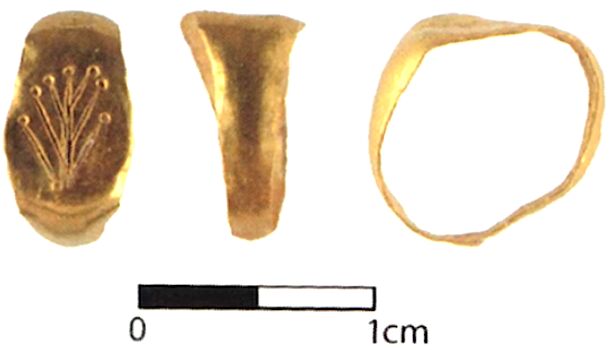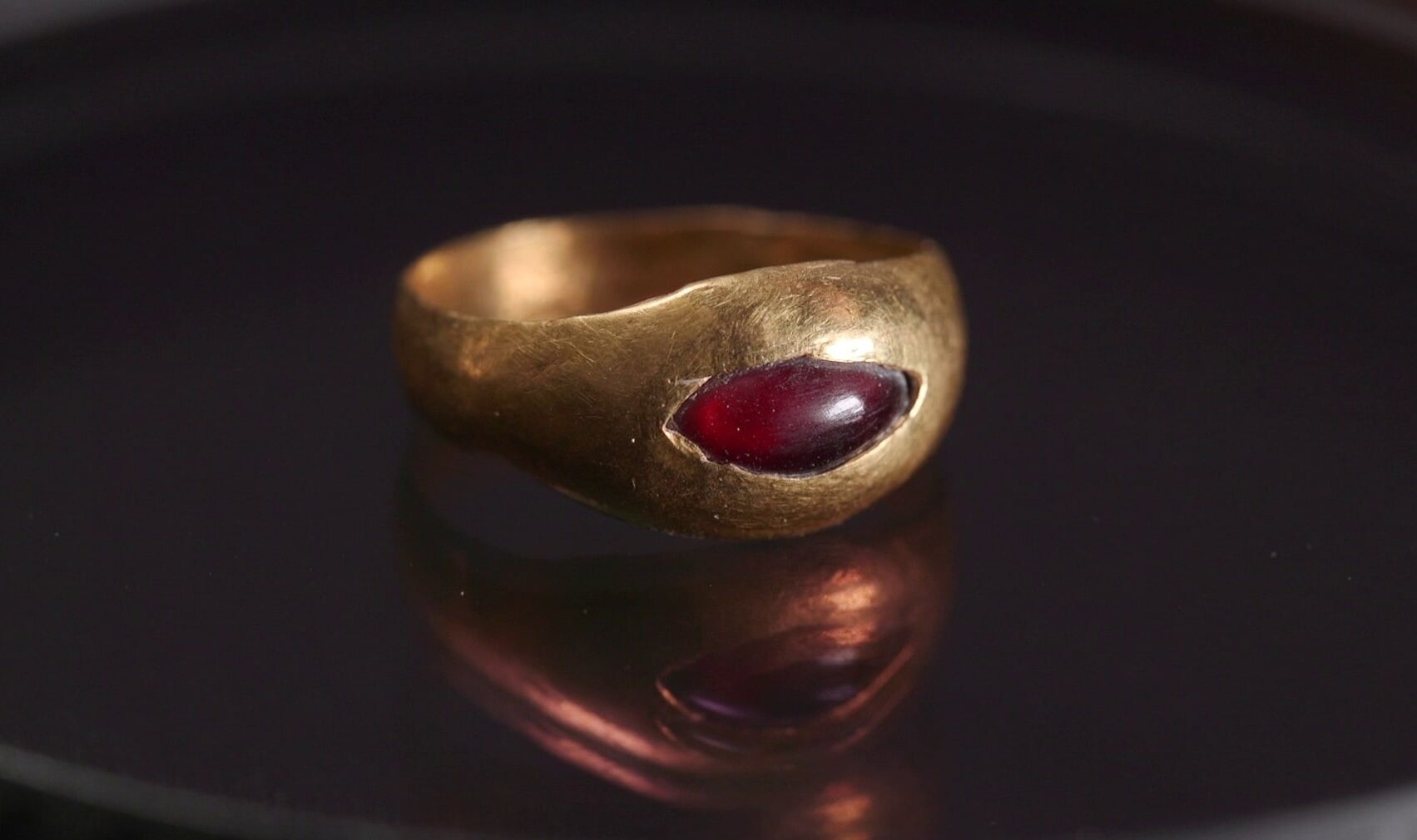The City of David’s Givati Parking Lot excavation has yielded up another stunning discovery: a 2,300-year-old gold ring. Even more intriguing is the miniature size of the artifact, “lead[ing] experts to suggest it is a child’s ring, either girl or boy, who lived in Jerusalem during the Hellenistic period,” according to the press release issued this morning.

The gold ring, set with a red precious stone (perhaps a garnet), was discovered by Tehiya Gangate, a member of the City of David team serving in the joint Israel Antiquities Authority/Tel Aviv University excavation. “I was sifting earth through the screen and suddenly saw something glitter,” she recalls. “I immediately yelled, ‘I found a ring, I found a ring!’ Within seconds everyone gathered around me, and there was great excitement. This is an emotionally moving find, not the kind you find every day. In truth I always wanted to find gold jewelry, and I am very happy this dream came true—literally a week before I went on maternity leave.”
Israel Antiquities Authority (iaa) excavation directors Dr. Yiftah Shalev and Riki Zalut Har-tov describe this as a “common fashion of the Persian and Early Hellenistic periods, dating from the late fourth to early third century b.c.e. and onward. In that period people began to prefer gold with set stones rather than decorated gold.” They note that the ring “would fit a woman’s pinky, or a young girl or boy’s finger.”

Prof. Yuval Gadot and Efrat Bocher summarize:
The Givati Parking Lot excavation finds are beginning to paint a new picture of the nature and stature of Jerusalem’s inhabitants in the early Hellenistic period. Whereas in the past we found only a few structures and finds from this era, and thus most scholars assumed Jerusalem was then a small town, limited to the top of the southeastern slope (“City of David”) and with relatively very few resources, these new finds tell a different story: The aggregate of revealed structures now constitute an entire neighborhood. They attest to both domestic and public buildings, and that the city extended from the hilltop westward. The character of the buildings—and now of course, the gold finds and other discoveries, display the city’s healthy economy and even its elite status.

“The recently found gold ring joins other ornaments of the early Hellenistic period found in the City of David excavations, including the horned-animal earring and the decorated gold bead,” they state. It also joins another 2,000-year-old gold “child’s ring” found just to the north, adjacent the Temple Mount. This discovery was first made some 50 years ago, during the “Big Dig” of the 1960s and ’70s—yet had for decades been packed away and overlooked, only published and announced by our beloved Dr. Eilat Mazar in 2021 in her book Over The Crossroads of Time: Jerusalem’s Temple Mount Monumental Staircases, just weeks before her untimely death.
This particular ring was engraved with a menorah design, and was so small that, in the words of Dr. Mazar, it “could fit only the finger of a newborn.” Read more about this discovery in our articles here and here.
Such gold items—belonging even to the youngest members of society—dramatically highlight the wealth and prosperity of this ancient “Jerusalem of gold,” in the words of the famous song.
The new City of David ring will be exhibited to the public next week at the free Jerusalem Day Conference arranged by the iaa (see here for details). Congratulations to Tehiya and the Givati Parking Lot team for another fantastic discovery!


